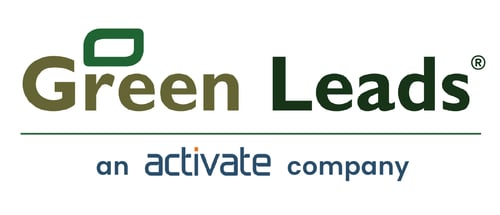With an impressive average of $43 of revenue for every $1 spent, email marketing's average return on investment (ROI) is a key reason why it ranks among the five best marketing strategies for all industries.1 And it delivers over $10 billion in annual revenue. However, before you start planning your email marketing campaign, we want to show you how op-in leads can help you 10x your email ROI.2
In this piece we will tell you all you need to know about:
- Opt-in leads and their different forms
- How opt-ins compare to real-time leads and mass mailings
- The value of using opt-in leads
- Optimizing your opt-in rate
- Avoiding the spam trap
- The benefits of opt-in sales leads
What Are Opt-In Leads?
Opt-in leads are sales leads harvested from email signup invitations on websites, advertisements, and social media platforms. To qualify as an opt-in lead, consumers must voluntarily click through the email signup prompt and fill out the opt-in form, complete with their email address.
In doing so, they confirm their intent to learn more about your products or services through newsletters, announcements, product updates, and other market messages. Also, opt-in leads may want to receive coupons, special passes, or sale notifications from your business.
Double Opt-Ins vs. Single Opt-Ins
Double opt-in leads and single-op-ins leads serve the same purpose. But double opt-in leads go a step further by consumers confirming interest in your email content a second time. For example, suppose you visited a travel website and signed up for the company's email list to get information about bargain travel packages.
Afterward, you receive an email from the travel company with a link to confirm your desire to join the email list. Clicking on this link will ensure that you continue receiving emails from the travel company. At this point, you become a double-opt-in lead.
Provided the consumer confirms interest by filling out the lead capture form, single opt-ins are a sound lead strategy, especially for product updates, newsletters, and notices. However, if you send special offers or coupons, the double-opt approach will help your email message avoid your subscribers' promotional and spam folders.
Real-Time Leads vs. Opt-In Leads
Real-time and opt-in leads voluntarily submit contact information on your website. However, their motives are very different. Real-time leads agree to exchange their contact information for access to more news, such as an eBook, more statistical data, or white paper. On the other hand, opt-in leads volunteer their email address for a subscription to your email chain.
A real-time lead's interaction with the company's website is short, making the value of the collected visitor data time-sensitive. For this reason, salespeople must receive the contact information within seconds and contact real-time leads while the product or service is still on their minds. Therefore, the freshness of real-time leads makes them much more expensive than opt-in leads.
However, a real-time lead's speedy delivery is also its biggest flaw — it leaves little time to qualify the lead or determine whether the respondent is interested in your product or service. On the other hand, since the opt-in leads complete an online survey and confirm interest in your wares, there is usually no sense of urgency to contact them immediately.
What Is An Opt-Out?
An opt-out is the email marketing process that allows consumers to unsubscribe from your email messages. Since they no longer want to receive your emails, you should automatically or manually take their email address off your list. The upside is opt-outs weed out consumers who are less likely to become customers.
Why Are Opt-In Leads Important?
Conversion rates are the holy grail in e-commerce. Considering this fact, 4.24% of customers from email marketing make purchases. In comparison, only 2.49% of search engines and .59% of social media visitors buy products or services.3
Opt-In leads can be pivotal in boosting your business's conversion rates. When consumers respond to your website's email call to action, they begin the forward process through your sales funnel and are one step closer to becoming paying customers.
The opt-in method is much more effective than mass emails because people tend not to open emails from companies they don't recognize. And with all the email scammers and fraudsters out there, who can blame them? In addition, opt-in leads are better prospective customers because they are already familiar with your business and what you offer.
Examples Of Opt-In Leads
Opt-in sales leads come in many forms. But the most popular variation is an email subscription. As part of their email marketing strategy, many companies feature email content and newsletters on their website. In addition, they usually prompt their website visitors to subscribe to their email chain through pop-up boxes or other prompts throughout the website. When visitors complete the subscription form and submit it, they confirm their interest in learning more about your business's product or services before deciding to buy.
An opt-in sales lead strategy is not exclusive to email marketing. It also works well with test message marketing (SMS). For example, you could use SMS to offer a discount coupon and special pass in exchange for the message recipient's phone number. This strategy can be highly effective since people open SMSs as much as 98% of the time.4
How To Boost Your Opt-In Leads Rate
Now that you understand opt-in leads well, here are some dynamic ways to boost your opt-in rate.
Timing Is Crucial
Pop-up forms can produce impressive conversion rates, provided you display them on your website at the right time. Well-timed pop-up forms attract more add-ins, whereas poorly-timed ones usually annoy website visitors. As a result, the success of your lead generation campaign depends heavily on finding the proper time to display your pop-up forms.
Getting the pop-up timing right is not as hard as you may think if you use behavior marketing. By purchasing a behavior monitoring tool, you can monitor visitor activity on your website. When you identify dominant visitor patterns, you can time the pop-ups to appear most appropriate.
You can also use Google Analytics to study your most visited pages to determine why your site appeals to them. Then, based on your findings, you can choose the best time to activate your signup offer.
Pay Attention To Placement
Placement is critical in presenting your opt-in form because even the most enticing offer can wither in the wrong location. Possible locations include:
- Top navigation bar
- The body
- Popup
- Top bar
Although all of these locations are viable, pop-ups and top bars are generally the most effective. To identify the best locations on your site, you can use Google Analytics or other web analytics software to do A/B testing on various spots on your pages.5
For example, you can conduct an A/B test by placing your email signup offer on the top bar of one page and in a pop-up on a second page. Then, use your web analytics to compare conversion rates over a specified period, maybe one month.
You should also try exit-intent pop-ups. Triggered by mouse tracking sensors, exit-intent pop-up forms appear when a visitor prepares to leave a webpage. Many online marketers have gotten exceptional increases in opt-in rates from exit-intent pop-ups.
Build Trust
When consumers shop, they typically look for products and brands with substantial social credibility. This is why review websites like Yelp and social media platforms have become powerful influencers in consumer shopping decisions. So, you must show that your email list is popular and beneficial to its subscribers.
By showing the email subscriber numbers, you can add attractive credibility to your signup offering. For example, you can include the signup in a short prompt on the opt-in form. It could be a line like, "Our 12,500 email subscribers get the freshest details on the best travel discount deals available."
In addition, sharing positive reviews and comments from current email subscribers will help build a social proof of your opt-in offer. It pays to improve your email campaign's trust ability by all available means, including industry awards and rankings.
Create An Offer Your Visitors Can't Refuse
By accepting your company's opt-in offer, visitors exchange their email addresses for the prospect of receiving valuable information. Also, they are giving your business access to their private domain, filtered by spam and promotional filters. Under these conditions, your task is to highlight value incentives visitors can expect from this exchange. Some possible incentives are:
- Discount coupons
- Free passes to events
- Exclusive access to sales (memberships)
- Two for one special
- Access to partnering businesses' discounts
How to Avoid Becoming Spam
The spam folder is where errant email marketing campaigns go to die. As such, your brand should do anything to steer clear of it. An excellent opt-in strategy helps email messages avoid spam folders, but not entirely.
Even opt-in emails can get the dreaded spam tag if you have some spam-worthy habits, such as using sales-oriented terminology like buy, free, cash, and order. Also, your opt-in email can get flagged when you send too many emails or time your email deliveries in excessively short intervals.
Opt-in emails generally reach their destination because of their permission and content-approval advantages. When you collect visitors' email addresses from an opt-in form, these subscribers aren't likely to mark your emails as spam because you have prior approval to send your marketing messages to them. Plus, the recipients consent to the type of information they receive.
As a result, your opt-in emails are primed to avoid the spam folder, provided your opt-in offer clearly defines the type of content your emails will contain, such as discounts, insider knowledge, or product updates. In addition, your website visitors should know how often they will receive your emails.
Benefits Of Using Opt-In Leads For Business
With an opt-in system, you can build a sizable email list of consumers who have expressed interest in your business (qualified leads). This process gives you valuable authenticated customer data that you can use for:
- Deep analysis
- Segmentation
- Targeted campaigns
- Surveys (market research)
Another key benefit of opt-in leads is they are incredibly cheap and easy to collect this data and generate sales leads. All it takes to get started is putting an email subscription box on your web pages. Then, you only need to create a series of email content and devise a delivery schedule for the emails sent to your subscribers.
Lastly, imagine the depth of communication you can achieve between your business and your email subscribers. Opt-in email marketing matches your brand with potential customers with a confirmed interest in your offerings. With the high likelihood that most of these people will become paying customers, you can develop a line of communication that can last their entire customer history or cycle.
Completing Your Email Marketing Strategy with Opt-In Leads
Compared to other marketing strategies, email marketing has one of the highest average conversion rates and ROIs. It can help you grow your business on its own. However, with careful thought and planning, opt-in lead generation provides a versatile, simple, and low-cost way to 10x your email ROI while reducing your emails' exposure to spam.
To help you get started, contact us at Green Leads and let us help you figure out the solutions you need to generate pipeline and scale your business – no matter the size!
Sources:
- Published by Statista Research Department, & 29, M. (2021, March 29). Roi generated by Digital Marketing Channels Worldwide 2017. Statista. Retrieved from https://www.statista.com/statistics/736848/roi-digital-marketing-channels/
- Kirsch, K. (2022, July 11). The ultimate list of email marketing stats for 2022. HubSpot Blog. Retrieved from https://blog.hubspot.com/marketing/email-marketing-stats?__hstc=243653722.6f10f5d04b4503a4afb9fae9e225820d.1650857362994.1668194018463.1668206047038.414&__hssc=243653722.1.1668206047038&__hsfp=2488950608
- Ixactcontact. (2012, November 14). Why you shouldn't Underestimate Email Marketing: Statistics. The American Genius. Retrieved November 17, 2022, from https://theamericangenius.com/business-marketing/why-you-shouldnt-underestimate-the-value-of-email-marketing/
- Shibu, S. (2020, September 2). Businesses, take note: Your customers prefer texts. PCMAG. Retrieved from https://www.pcmag.com/news/businesses-take-note-your-customers-prefer-texts
- A refresher on a/B testing. Harvard Business Review. (2017, November 27). Retrieved from https://hbr.org/2017/06/a-refresher-on-ab-testing



